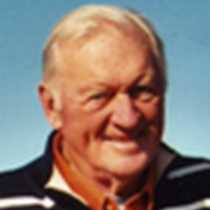Astoria, Oregon and Cape Disappointment, Washington
Astoria would not be Astoria without flashes of sunshine mixed with a cloud or two. The Columbia River mouth is one of the world’s most exciting – and threatening – channels of raging waters. This watery maelstrom is brackish for a few miles; fresh upriver; briny at the Columbia Bar. The National Geographic Sea Lion moved through this changing scene at about 7:00 a.m. With the scene set, and after breakfast, two motor coaches left the dock at Tongue Point (our temporary docking facility) to Fort Clatsop, followed by the Columbia Maritime Museum.
The small city of Astoria, named for John Jacob Astor, the nation’s richest man in the early 1800s, was targeted to be the “New York of the West.” That didn’t happen, and Astor claimed he lost money on his attempt to open trade with China and Russia from the mouth of the Columbia River. Instead, it is today a charming village of bargains, small shops, excellent restaurants and coffee shops.
Fort Clatsop, originally designed by William Clark, and built by members of the Corps of Discovery under the direction of Patrick Gass, master carpenter, is in its third reincarnation. The first fort disappeared into the earth after 100 years, the second caught fire and burned after a candle-making demonstration went awry, and the third fort – the one we visited – was constructed with donated labor and materials in 2006.
It would be difficult to exaggerate the mix of maritime art, artifacts and history exhibited at the Columbia River Maritime Museum. Several guests spent their entire day at this world-class facility, while the rest of us roamed among Lewis and Clark sites.
After lunch guests again chose between two excursions: a motor coach ride to the Washington side of the river and its Lewis & Clark Interpretive Center at the towering rock edifice called Cape Disappointment; and some physical exercise aboard kayaks exploring bays and rivers at the east end of Astoria.
Among the wildlife seen during these adventures were an owl, bald eagles, gulls galore, California sea lions (basking and bullying each other on Astoria docks), cormorants and great blue herons. Among the clear, dramatic geological monuments in view was Saddle Mountain, the highest mountain in Northwest Oregon. The Chinook and Clatsop Indians believe that this peak is where humans were created. (For example, the great Thunderbird probably derived from glimpses of California condors – now gone – laid her eggs on the highest point of the mountain, they rolled to the bottom and broke open. Human beings stepped out. And, according to legend, we are all descended from this Great Event.)




